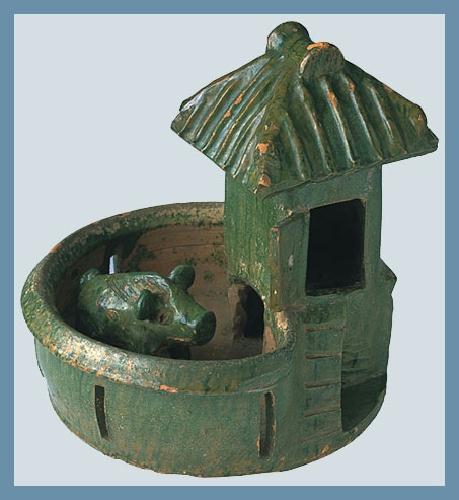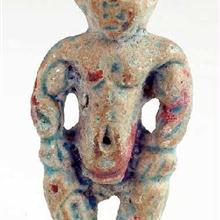Dimensions: height 25.3cm; pigsty width:24.5cm
It is a funerary model with a low fired lead glaze. The pigsty is next to the toilet, which reflects the life and customs of the peasants during the Han Dynasty. The walls of the round pigsty are done in openwork, and a pig is in the sty. On one side of the fence there stands a square toilet with an awning stretching out of the wall. The roof can be separated from the toilet and there is a stairway outside the door of the toilet and the dung pit is connected to the pigsty. The red-bodied pigsty was fired at a low temperature and painted with a glittering green glaze, which makes it a rare find among its type.
Pottery with a low fired lead glaze was a common funerary object in the Eastern Han Dynasty. People advocated filial piety in the Eastern Han Dynasty and luxurious funerals were the norm .They arranged everything for the dead to use in the afterlife from living space to daily utensils, most of which were represented by models. The pen for domestic animals was very important. As the types of domestic animals varied from place to place so did the types of models. The pigsty was seen a lot in Hunan because of its well established, successful pig-breeding industry.
“Pigsty” is an archeological term, whose counterpart in the Han Dynasty was Hun (溷). Different from a modern “pigsty”, Hun were built by combining the pigsty and toilet according to the custom of the time. Hun itself means toilet.
It is recorded that it was bad fortune when pigs ran out of the pigsty. At that time, the combination of sty and toilet was for the purpose of storing manure.





